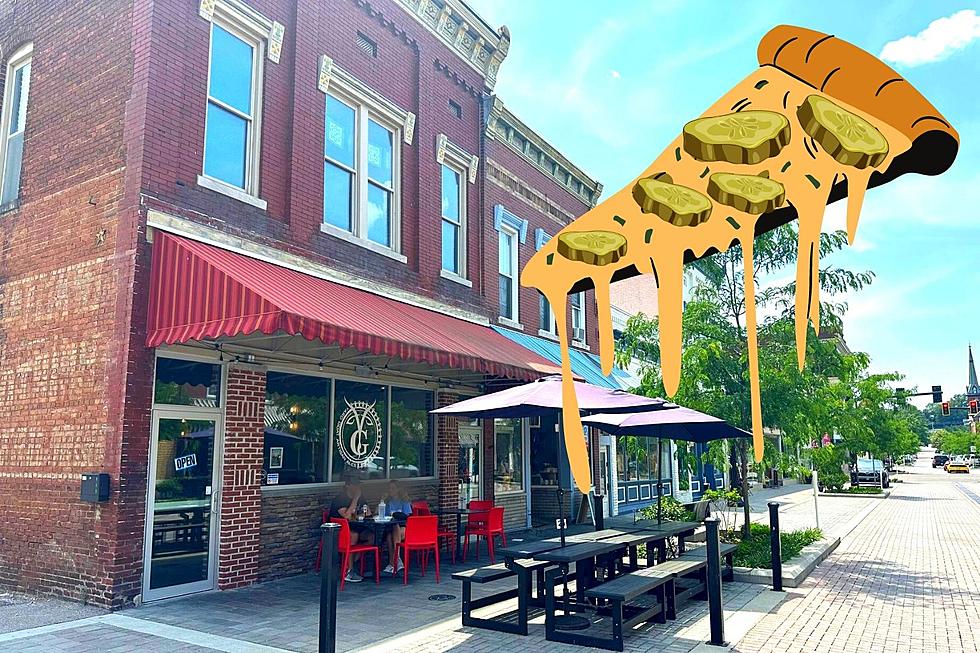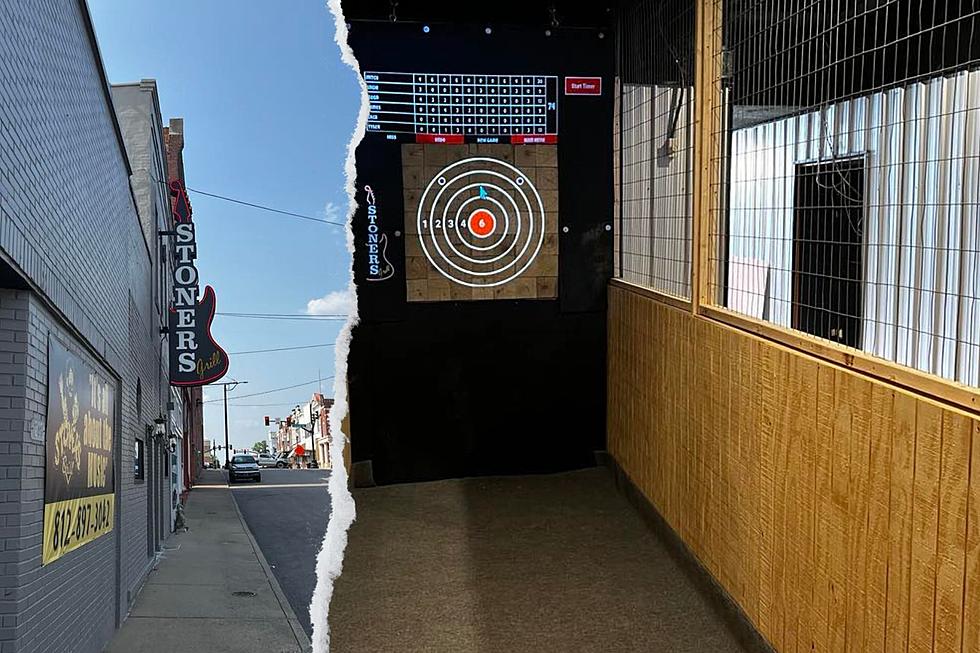![Suffering Sappho: Women, Men, and Grant Morrison in ‘Wonder Woman: Earth One’ [Review]](http://townsquare.media/site/622/files/2016/04/wwearthone_stevecrash.png?w=630&h=485&zc=1&s=0&a=t&q=89&w=980&q=75)
Suffering Sappho: Women, Men, and Grant Morrison in ‘Wonder Woman: Earth One’ [Review]
Wonder Woman, you often hear, is complicated. Batman and Superman, the other two corners of DC's "Trinity," are generally discussed as if there are definitive versions of the characters that every adaptation is closer to or farther from. Nobody agrees on what those definitive versions are, of course, but most seem to believe they exist. But Wonder Woman, we're told, is complicated. After all, Wonder Woman was created by a bondage-loving polyamorous psychologist whose espoused worldview wasn't so much feminist as female-supremacist.
The key difference between Wonder Woman and her male counterparts is that ever since William Moulton Marston died, those in charge of the character have been actively running away from his version, in an attempt to make her more acceptable by the standards of mainstream 20th Century entertainment, which hasn't historically been friendly to feminism, let alone pro-bondage quasi-queer female supremacy.
But Grant Morrison, the writer behind the new Wonder Woman: Earth One graphic novel with artist Yanick Paquette, is known as a writer who is unafraid of ideas. In discussing this project, which was in development for years, he expressed a desire to bring back some of the weirdness that only Marston brought to the character.
Morrison also said that he read a lot of feminist writings in preparation for this book. In fact, he seemed to be trying to read them all. "I've been working my way through the entire history of feminism," Morrison told Newsarama in 2013, "which has been brilliant fun."
Interestingly, nothing in the history of feminism seems to have communicated the idea that giving women jobs is an important part of doing feminist work. In addition to Paquette on pencils, the book features Nathan Fairbairn on colors and Todd Klein on letters. An entirely male creative team seems like an odd fit for a book that's meant to be steeped in feminism and femininity, but maybe this was another effort to recapture the magical formula of the 1940s, when credited female comics creators were almost unheard of.
There's a lot going on in this book that I really like. Paradise Island, here called Amazonia, is once more the science fiction utopia that Marston created it to be. There's a purple healing ray, saddled kangaroos, a magic mirror with which Hippolyta spies on Man's World. There's even an invisible plane, or at least a flying vehicle with cloaking capabilities, which has a more sci fi (and as Maude Lebowski might put it, strongly vaginal) design than the original version.
Morrison also follows threads to their conclusion that simply couldn't be talked about openly in the classic Wonder Woman comics. These Amazons are overtly queer, having attractions and relationships with each other in the absence of men. Even Princess Diana herself has a lover named Mala, who is the champion of the Amazons, the official Wonder Woman, before Diana breaks the rules to take that title for herself as part of her plan to rescue Steve Trevor. Which is a pretty harsh way to break up with your girlfriend.
Of course, the problem with making Amazonia a sci fi lesbian utopia is that it almost immediately becomes a dystopia instead. Morrison doesn't include a bibliography of his historical feminist research, but it's clear he read Valerie Solanas's famously harsh SCUM Manifesto, because his version of Hippolyta practically quotes it when she talks about men:
Their "masculinity" is a sad, broken aberration of nature. Genetically incomplete man. Always yearning for what he cannot be or own.
Coming from a real queer woman like Solanas, these kinds of reductive sentiments can be read as a righteously satirical expression of anger. But coming from the Queen of the Amazons in a fantasy written by a man, it's hard to see anything other than the construction of a straw feminist to be knocked down by the nobility of Steve Trevor and the diverse beauty Diana finds in the world outside Amazonia.
Steve does come off well in this book. He's a black man, which is a change I can get behind, even if his "My ancestors were also enslaved by powerful men" speech to Hippolyta comes off as a little ham-handed. But throughout the story, he seems like a real person, a 21st Century soldier with the best of intentions and a healthy mistrust of the institutions that employ him. Even though Diana grabs his crotch when they first meet (apparently Hippolyta has instilled some essentialist ideas about what makes a man), he's never the least bit creepy or entitled. And when she offers him a bondage collar as part of an Amazonian trust ritual, well, his facial expression is probably a lot like mine was when I read that page.
So yeah, the bondage is definitely present in this book, and I'm not really sure that Morrison ever justifies it beyond its historical association with the character. There's a lot of talk about "loving submission" (a favorite Marston idea), but no real exploration of what that means in a society of equals. The bondage isn't offensive, unless you're just the sort of person who's bothered by anything kinky, but it feels less like an integrated story element than a nod to the original comics and a cheeky bit of fun. Particularly when Diana is returned to Amazonia as a prisoner, the emphasis on her bonds feels gratuitous and irrelevant to the events of the story.
If the bondage elements are there to excite the reader, they certainly also excite the book's most fun character, Beth Candy. Beth is an update of Marston's Etta Candy, with a modernized first name that obviously references musician Beth Ditto, who her face is recognizably drawn to resemble in many panels.
Unlike Trevor, Candy never really feels like a real person, but I don't think she needs to. She's a proudly bisexual fat femme Texan sorority girl, which is an archetype I've never met in real life, but I'd love to someday. Her "Woo woo" catch phrase is retained from the Golden Age comics, and feels right at home in the lexicon of a outspoken cocktail-swigging college girl.
Morrison's Candy is everything that's missing from all post-Marston attempts to handle the character, and I would be happy to see her imported wholly into Greg Rucka's upcoming monthly Wonder Woman book. She captures who Etta Candy was created to be (including the queerness, which was always implicit in the interactions of the Holliday Girls), reshaped into a character who works in 2016. There are things in this book that I have mixed feelings about, but Beth Candy is not one of them. She's a perfect revision of an essential but often forgotten element of the Wonder Woman mythos.
Unfortunately, the tradeoff for Beth Candy is multiple Amazons body-shaming Beth Candy. The idea that fat women only exist in Man's World, while Amazonia is entirely composed of women who fit a narrow standard of conventional beauty, is offensive in its backwardsness. Amazonia is portayed as a nation of queer women who lounge in the sunshine enjoying the finer things in life, and yet they've never seen a fat woman? I don't buy it. As with the SCUM Manifesto rhetoric discussed above, it's just another way to make the Amazons seem like terrible people.
The reliance on reductive and harmful language to provide a counterexample to the positive characters is a problem throughout the book. In fact, the first page features Hercules calling Hippolyta a crass gendered slur. And that's not out of character — this Hercules is a terrible, misogynistic person — but it's a questionable way to start a Wonder Woman comic. Grant Morrison has put great effort into telling a feminine-centric story, but the most masculine aspect of his storytelling remains in full effect, which is this need to kick up the dirt around the issues — to put what's negative right in the reader's face as if to say, "Oh yeah, we're dealing with the real stuff here."
As I said before, there's a lot that I like in this book, but it feels a little off throughout. Morrison incorporates the queer, kinky, and radically feminist undertones of the character directly into the story, but his perspective remains that of a man playing with toys that aren't his. He makes Amazonia a lesbian utopia, but it's the lesbian utopian of a male imagination — that is, one you wouldn't really want to live in.
Similarly, Yanick Paquette's art is gorgeous, but his Amazons, Wonder Woman included, always have the particular sensuality of women drawn by male comics artists. Even the most militant Amazons fit every standard of conventional beauty, making it unsurprising that they view the book's one fat character as a disturbing aberration.
I hate sounding essentialist about gender, I really do. Wonder Woman, after all, was (at least primarily) created by a man. But when Morrison was so specific in his desire to tell a feminist, woman-centered story, and something feels so missing from it, it's unavoidable that the all-male creative team feels like a big part of the problem.
If you want to really talk about women, and women's experiences of the world, and how to create the most iconic version of the most heroic woman in pop culture, you really should invite women to the table. In the absence of non-fictional women, this story about fictional women is fascinating, but never quite successful.





